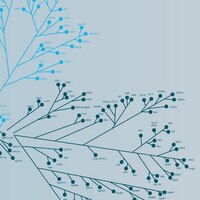The Abl-related gene (Arg) nonreceptor tyrosine kinase uses two F-actin-binding domains to bundle F-actin.
Wang, Y, et al.
Proc. Natl. Acad. Sci. U.S.A., 98: 14865-70 (2001)
2001
Show Abstract
Abl family nonreceptor tyrosine kinases regulate cellular morphogenesis and motility through functional interactions with the actin cytoskeleton. Although Abl family kinases are known to contain filamentous (F)-actin-binding domains at their C termini, it is unclear how Abl family kinases regulate the structure and/or function of the actin cytoskeleton. We show here that the Abl-related kinase Arg binds with positive cooperativity to F-actin in vitro with binding saturating at a ratio of one Arg/two actin molecules. Measurements of the F-actin-binding properties of Arg deletion mutants led to the identification of a second, previously uncharacterized internal F-actin-binding domain in Arg. Purified Arg can bundle F-actin in vitro, and this bundling activity requires both F-actin-binding domains. An Arg-yellow fluorescent protein fusion protein can induce the formation of actin-rich structures at the lamellipodia of Swiss 3T3 fibroblasts. Both of Arg's F-actin-binding domains are necessary and sufficient for the formation of these actin-rich structures. Together, our data suggest that Arg can use its F-actin-bundling activity to directly regulate actin cytoskeletal structure in vivo. | 11752434
 |
Essential roles for the Abl and Arg tyrosine kinases in neurulation.
Koleske, A J, et al.
Neuron, 21: 1259-72 (1998)
1998
Show Abstract
The Abl and Arg tyrosine kinases play fundamental roles in the development and function of the central nervous system. Arg is most abundant in adult mouse brain, especially in synapse-rich regions. arg(-/-) mice develop normally but exhibit multiple behavioral abnormalities, suggesting that arg(-/-) brains suffer from defects in neuronal function. Embryos deficient in both Abl and Arg suffer from defects in neurulation and die before 11 days postcoitum (dpc). Although they divide normally, abl(-/-)arg(-/-) neuroepithelial cells display gross alterations in their actin cytoskeleton. We find that Abl and Arg colocalize with each other and with actin microfilaments at the apical surface of the developing neuroepithelium. Thus, Abl and Arg play essential roles in neurulation and can regulate the structure of the actin cytoskeleton. | 9883720
 |










